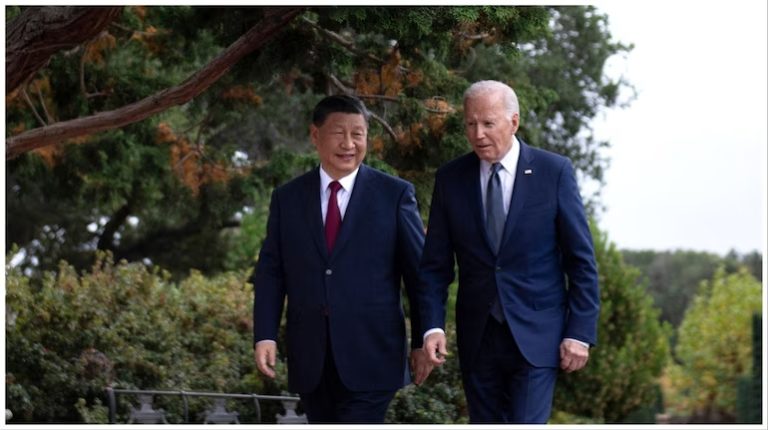Highlights
- The two leaders will meet at APEC talks in Lima.
- They will discuss key issues, including cybercrime, trade, Taiwan, and Russia.
- The potential return of Trump casts uncertainty over US-China relations.
Joe Biden will meet with Chinese President Xi Jinping in Lima, Peru, on Saturday. This marks their final meeting during Biden’s presidency as they aim to lower tensions before Donald Trump takes office in January.
The meeting takes place on the sidelines of the Asia-Pacific Economic Cooperation (APEC) forum. It will be the first time the two leaders have spoken in seven months, with critical issues like cybercrime, trade, Taiwan, and Russia dominating the agenda.
The timing of the meeting has not been disclosed, but the stakes are high. Pacific Rim leaders are also evaluating how Trump’s return might impact global relations.
Washington is outraged by a recent cyberattack linked to China. The breach targeted U.S. government communications and officials involved in presidential campaigns, escalating tensions further.
Biden’s administration remains deeply concerned about Beijing’s increasing pressure on Taiwan. The U.S. also views China’s support for Russia as another point of contention.
Taiwanese President Lai Ching-te’s planned stops in Hawaii and Guam have added fuel to the fire. These visits, which are expected to anger Beijing, come at a sensitive time for U.S.-China relations.
China considers Taiwan an integral part of its territory, while the U.S. continues to act as Taiwan’s main international ally and arms supplier. This dynamic remains a cornerstone of ongoing tensions.
At the same time, Biden’s trade policies have hit China’s economy hard. Restrictions on U.S. investment in advanced Chinese technologies, like artificial intelligence and semiconductors, are taking a toll.
Biden is also implementing export controls on high-end computer chips, further straining Beijing’s tech sector. These trade policies are expected to be a significant part of the talks.
China routinely denies U.S. accusations of hacking and interference in Taiwan. Beijing has also protested Washington’s criticism of its economic ties with Russia.
Trump’s incoming administration adds another layer of complexity. The president-elect has pledged to impose 60% tariffs on Chinese imports as part of his “America First” trade strategy.
Trump also plans to appoint hawkish officials to senior roles, such as Senator Marco Rubio as Secretary of State and Representative Mike Waltz as National Security Adviser. Beijing has voiced strong opposition to these moves.
Biden’s National Security Adviser Jake Sullivan has emphasized the need for stability during this transition period. He warned that adversaries might exploit uncertainties in U.S. leadership.
Xi, meanwhile, views this meeting as a chance to prevent further turmoil. Chinese scholars, like Shen Dingli, have underscored Beijing’s desire for a smoother transition.
The APEC summit highlights China’s growing influence in Latin America. Xi’s diplomatic efforts in the region showcase Beijing’s ambition to expand its presence in the U.S.’s backyard.
Xi arrived in Lima on Thursday and plans a week-long tour of Latin America. His itinerary includes a new trade agreement with Peru and the inauguration of the Chancay deep-water port.
China is aggressively pursuing access to Latin America’s natural resources, such as soybeans and metal ores. U.S. officials fear this could also lead to military and intelligence footholds near U.S. borders.
Chinese state media has dismissed these concerns, labeling them as baseless accusations. However, Washington continues to emphasize its commitment to the region.
Experts like Ryan Berg believe Xi’s initiatives will resonate well in Latin America. The reception to his visit is expected to overshadow Biden’s presence at the summit.
For Xi, this meeting with Biden serves multiple purposes. Beyond addressing diplomatic tensions, it seeks to reassure U.S. investors and reshape perceptions of China’s business climate.
As the APEC talks unfold, both leaders aim to navigate a complex web of political, economic, and security challenges. The outcomes could shape U.S.-China relations in the months and years ahead.

